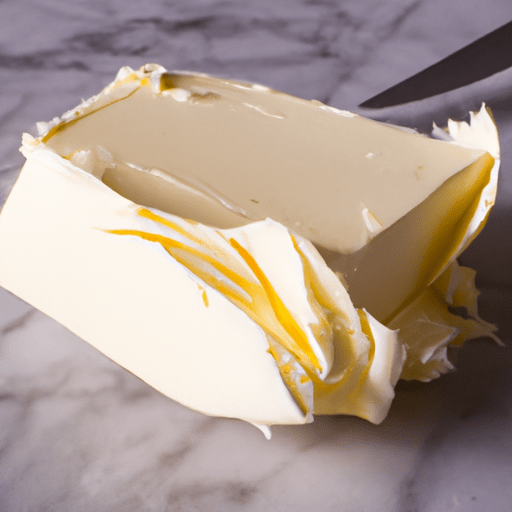Experience the Richness of Butter Flavor Shortening
When it comes to enhancing the taste and texture of our favorite baked goods, butter is often the first ingredient that comes to mind. Its rich, creamy flavor and ability to create a tender, flaky crust or a moist, fluffy cake are unparalleled. But what if there was a way to achieve that same mouthwatering goodness without the need for traditional butter? Enter butter flavor shortening, a versatile ingredient that can add a delightful buttery taste to a wide range of culinary creations.
Taste that Melts in Your Mouth
Butter flavor shortening is designed to mimic the taste and texture of butter but in a convenient, shelf-stable form. It boasts a rich, buttery flavor that can make your taste buds dance with joy. Whether you’re making flaky pie crusts, tender biscuits, or delectable cookies, this shortening adds a touch of indulgence to your baked treats. Its smooth, velvety texture ensures easy incorporation into your recipes, allowing for a consistent and enjoyable culinary experience.
Versatility in Cooking
One of the great aspects of butter flavor shortening is its versatility in the kitchen. While it’s commonly used in baking, this ingredient offers numerous applications beyond just sweets. It is excellent for sautéing vegetables, pan-frying meats, or creating a buttery glaze for roasted poultry. Its high smoking point ensures that your culinary creations won’t burn or develop off-flavors. By using butter flavor shortening, you can effortlessly infuse that beloved buttery taste into a variety of dishes, both sweet and savory.
Nutritional Value and Dietary Considerations
When discussing any cooking ingredient, it’s important to consider its nutritional value. Butter flavor shortening is free from cholesterol and trans fats, making it a healthier alternative to traditional butter. It offers a lower saturated fat content while providing a source of healthy monounsaturated fats. This can be a boon for those conscious of their dietary choices. Furthermore, butter flavor shortening often contains vitamin E, which acts as an antioxidant, benefiting our overall health.
While it may provide a healthier option, it’s worth noting that butter flavor shortening is still calorie-dense. As with any ingredient, moderation is key. Be sure to consider your overall nutritional needs and dietary goals when incorporating it into your culinary creations.
History and Interesting Facts
The origins of butter flavor shortening can be traced back to the early 20th century. As the demand for more convenient and readily available baking ingredients grew, food scientists began developing alternatives to animal fats. Initially, shortening was made from animal drippings such as lard, but advancements in food technology led to the creation of vegetable-based shortenings.
Butter flavor shortening emerged as a response to the desire for that iconic butter taste. By combining vegetable oils with natural or artificial butter flavorings, food manufacturers were able to create a product that offered the best of both worlds. Today, butter flavor shortening remains a staple in countless kitchens, beloved for its ability to impart the lusciousness of butter without the need for refrigeration.
Conclusion
Butter flavor shortening is an invaluable addition to any kitchen, providing the mouthwatering taste of butter without the limitations of traditional dairy. Its versatility makes it ideal for both sweet and savory recipes, allowing you to enjoy a touch of indulgence in every bite. Whether you’re a passionate baker or an experimental cook, this ingredient opens up a world of culinary possibilities. So go ahead, experience the richness of butter flavor shortening and elevate your dishes to new heights of flavor!
Origin:
Butter flavor shortening is a type of vegetable shortening that is flavored to mimic the taste of butter. Vegetable shortening itself is a solid fat made from vegetable oils, usually containing hydrogenated or partially hydrogenated oils. The specific origin of butter flavor shortening is unclear, but vegetable shortening has been used in cooking and baking for many years.
Common Uses:
Butter flavor shortening is a popular ingredient in baking, especially in recipes that call for a buttery flavor but require a solid fat. It can be used in a variety of baked goods such as cakes, cookies, biscuits, and pie crusts. It is also commonly used for frosting and icing recipes to achieve a buttery taste without incorporating actual butter.
Nutritional Benefits:
Butter flavor shortening, like regular vegetable shortening, is primarily composed of fats. It is typically high in calories and contains no cholesterol, as it is made from vegetable oils instead of animal fats. The exact nutritional composition may vary between brands, so it’s important to check the specific information on the product packaging.
Unique Properties or Historical Significance:
The development of butter flavor shortening allowed for a butter-like taste and texture in baked goods without using real butter. This was particularly significant in regions or times when butter supplies were scarce or expensive. The use of shortening in general, including butter flavor shortening, helped to make baking more accessible and affordable for many households.
It’s worth noting that while butter flavor shortening can mimic the taste of butter, it is not the same as using real butter. The flavor and texture are different, as real butter contains water and milk solids, which affect the final outcome of baked goods.




Use the share button below if you liked it.
It makes me smile, when I see it.